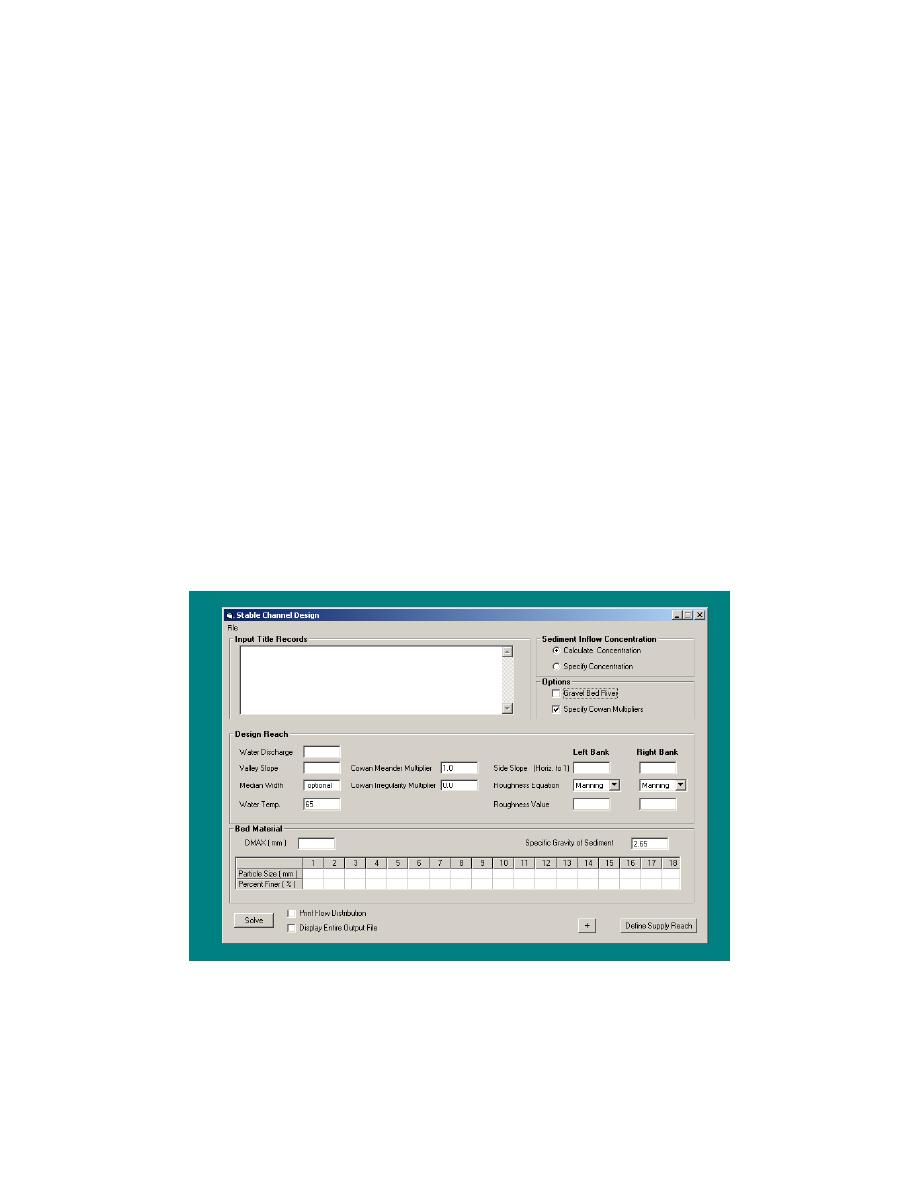
Valley Slope Valley slope is the maximum possible slope for the channel
invert. This value is used in the test for sediment deposition. If the required
slope exceeds the prescribed valley slope, the following message is printed:
>>>>MINIMUM SLOPE IS GREATER THAN VALLEY SLOPE - THIS IS A SEDIMENT TRAP <<<<
Bank Slopes and Roughness The analytical method assumes all bed
material transport occurs over the bed of the cross section and that none
occurs above the side slopes. Therefore, the portion of water conveyed
above the side slopes expends energy but does not transport sediment,
making "Flow Distribution" an extremely important calculation. The
input parameters for flow distribution are bank angle and bank roughness.
The recommended procedure to use for this is that discussed in Chapter 5
of EM 1110-2-1601 (USACE 1991, 1994). Any roughness input for the
bed will be disregarded by the calculations as bed roughness is calculated
using the Brownlie equations. Also, only the Manning and Strickler
equations are available for roughness calculations in this option. For
maximum transport of sediment, use the steepest bank angle allowed by
bank stability requirements
Bottom Width Again, it is important that the base width is
representative of the total movable-bed width of the channel.
Figure 6.17. Cowan Multipliers input turned on Stable Channel
Methods screen.
114
Chapter 6
Input Requirements and Program Output for SAM.hyd



 Previous Page
Previous Page
